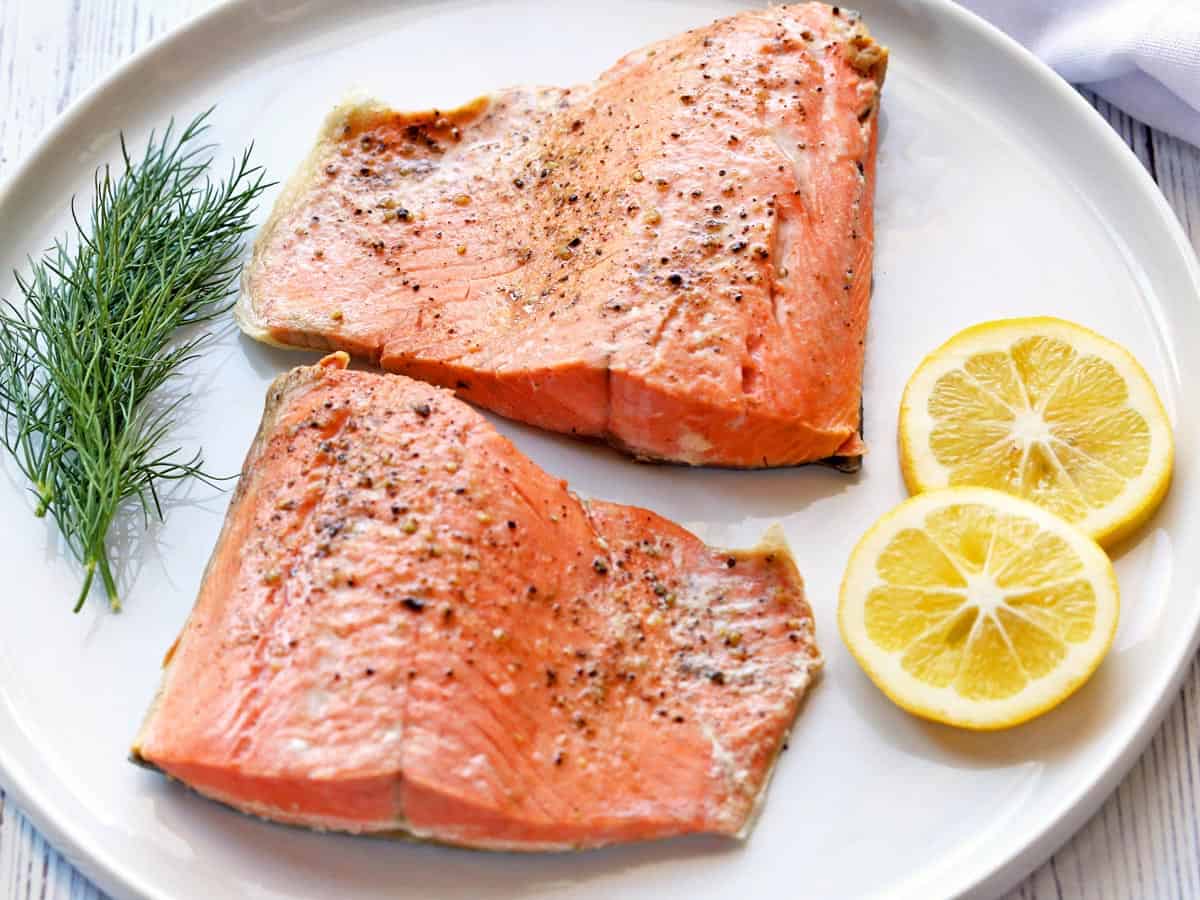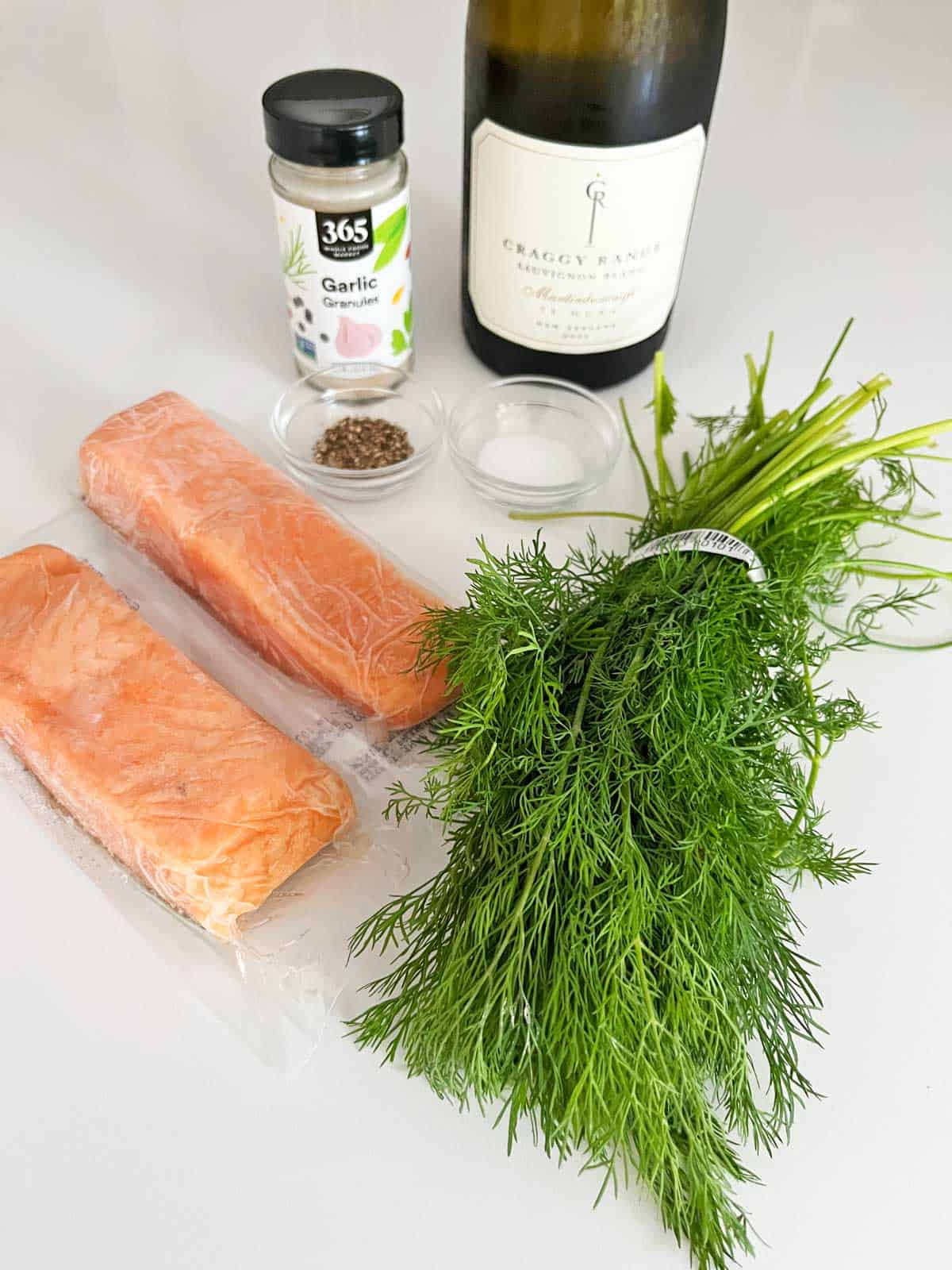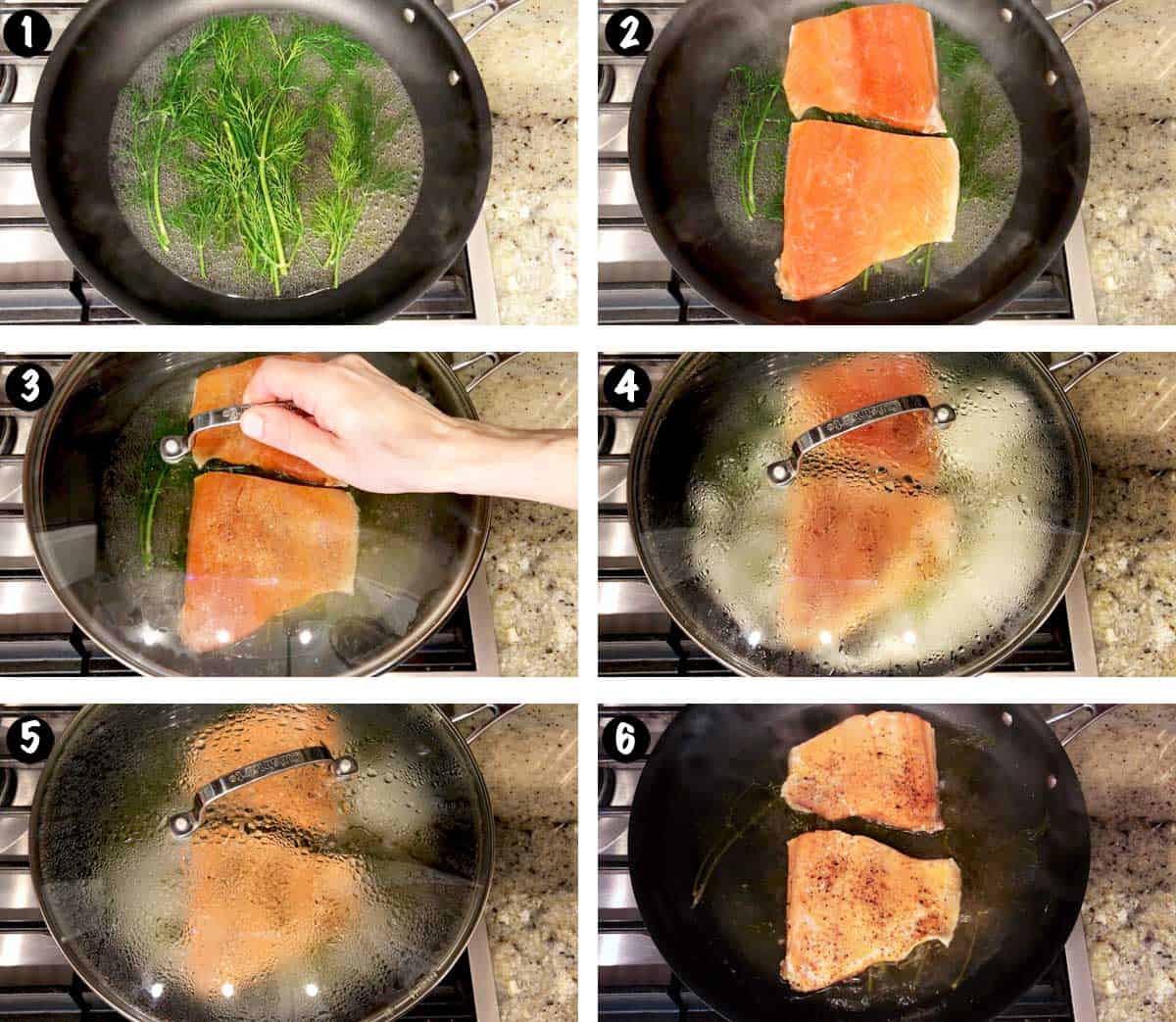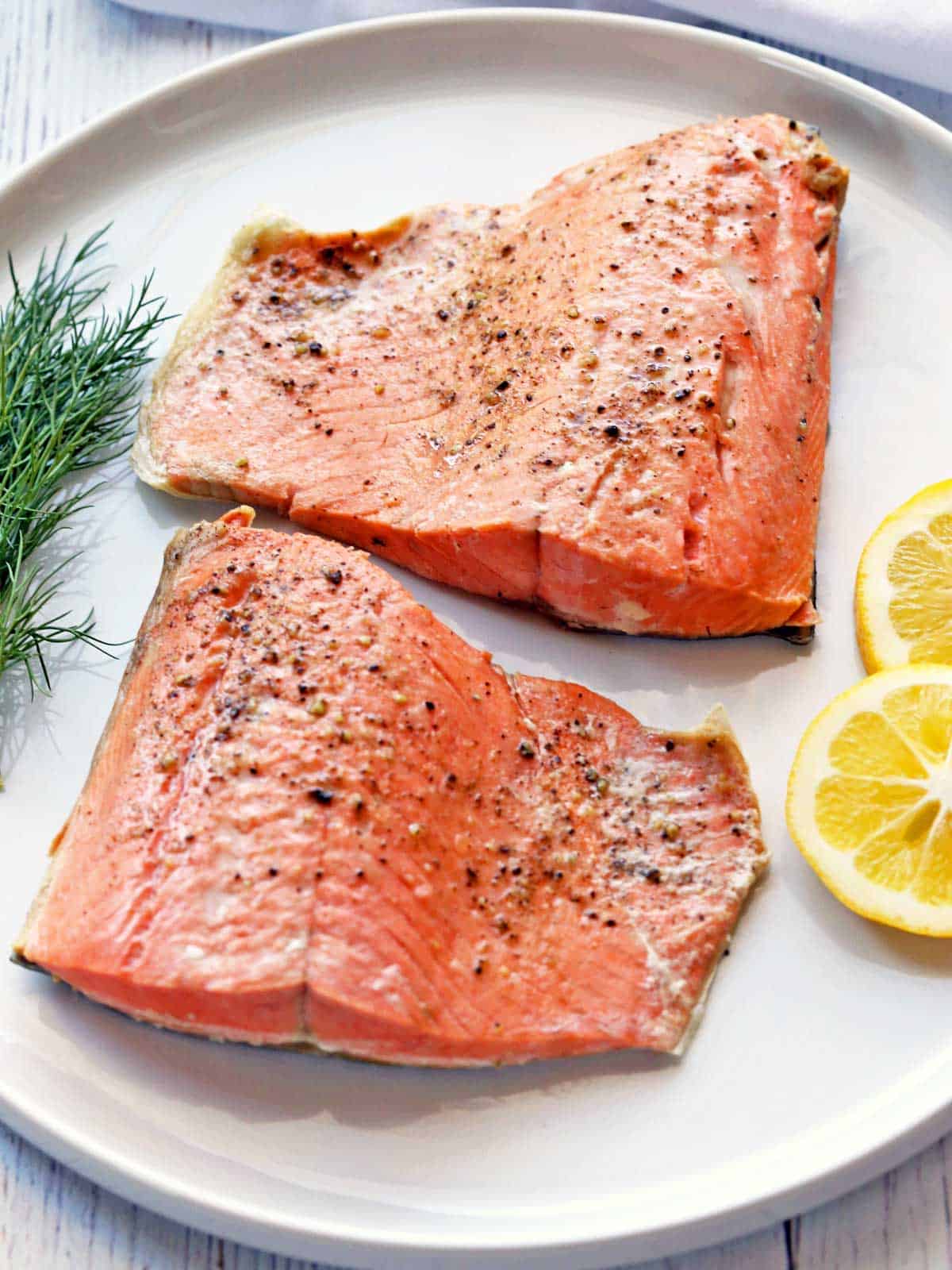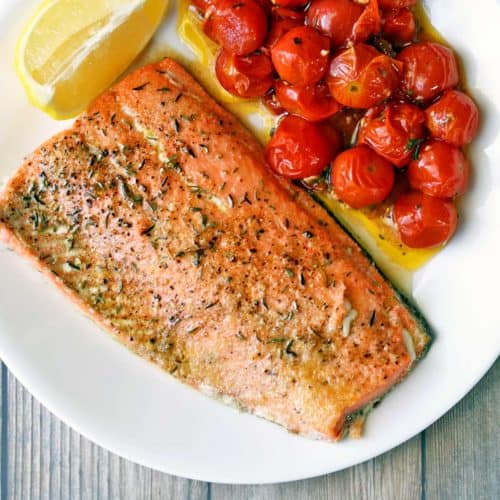You can poach the fish in white wine and serve it warm with hollandaise sauce, or serve it cold with tartar sauce. I make salmon often and have a pretty large collection of salmon recipes on this website. I love sautéing salmon in butter until its skin is nice and crispy. And baked salmon is absolutely wonderful, as are these very flavorful grilled salmon and broiled salmon.
Ingredients
You’ll only need a few simple ingredients to poach salmon. The exact measurements are listed in the recipe card below. Here’s an overview of what you’ll need: Just take care not to overcook the fish to avoid drying it out. But this is true for any cooking method.
Dry white wine: You can also use fish stock or even water; I do enjoy the flavor that the wine adds. And then we also drink it with our meal!Dill: I place it in the bottom of the pan, then place the fish fillets on top.Salmon fillets: I love the taste of wild-caught salmon, but any salmon will work in this recipe.Seasonings: I use kosher salt, black pepper, and garlic powder. I actually prefer garlic powder to minced garlic, because it coats the salmon more evenly.
Instructions
Poaching salmon is easy! Scroll down to the recipe card for detailed instructions. Here are the basic steps:
Pour the wine into a large lidded skillet. Bring it to a simmer.Place the dill in the skillet, reserving a few sprigs for garnish. Place the salmon fillets, skin side down, on top of the dill. Sprinkle them with salt, pepper, and garlic powder.Cover the pan tightly and poach the fish until cooked through, 5-10 minutes. That’s it!
Expert tip
To ensure the fish poaches rather than boils, make sure to maintain a gentle simmer rather than a rolling boil. If needed, reduce the heat to medium-low.
Frequently asked questions
Variations
The best way to vary this recipe is to experiment with different poaching liquids and see which of them you like best. Good candidates include dry white wine, fish stock, milk, or simply water.
Serving suggestions
This salmon is delicious when served warm, on its own, drizzled with melted butter, or topped with hollandaise sauce. You can also serve it chilled, with mayonnaise, or with some homemade tartar sauce. As for side dishes, this dish is very versatile. It goes really well with most vegetables. When I serve it cold, I often serve it with asparagus salad or with broccoli salad.
Storing leftovers
You can keep the leftovers in the fridge, in a sealed container, for up to 3 days. I like to flake them and add them, cold, to a salad the next day for my lunch. But you can also reheat the leftovers - just do so very gently, in the microwave, covered, on 50% power. If you reheat them too aggressively, they will be dry.
Related recipes
👩🏻🍳 I typically publish a new or an updated recipe once a week. Want these recipes in your inbox? Subscribe! You can unsubscribe at any time.
Recipe card
❤️ Let’s connect! Follow me on Pinterest, Facebook, TikTok, YouTube, Instagram, or Twitter.
